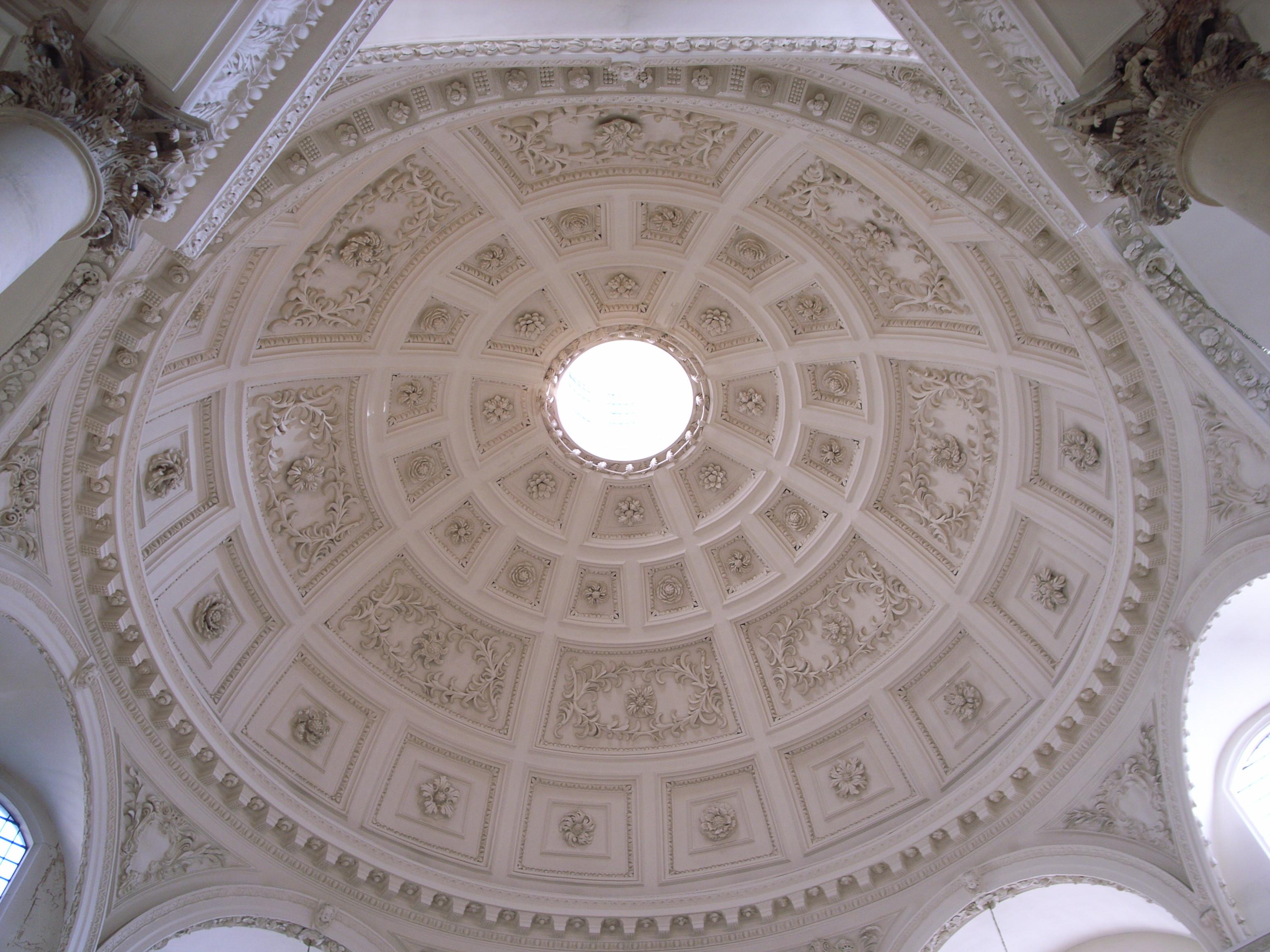
Sir Christopher Wren
If you seek his memorial, look about you
by Sarah Crossland, Engagement Manager
Sir Christopher Wren was an English scientist and mathematician and one of Britain's most distinguished architects, best known for the design of many London churches, including St Paul's Cathedral.
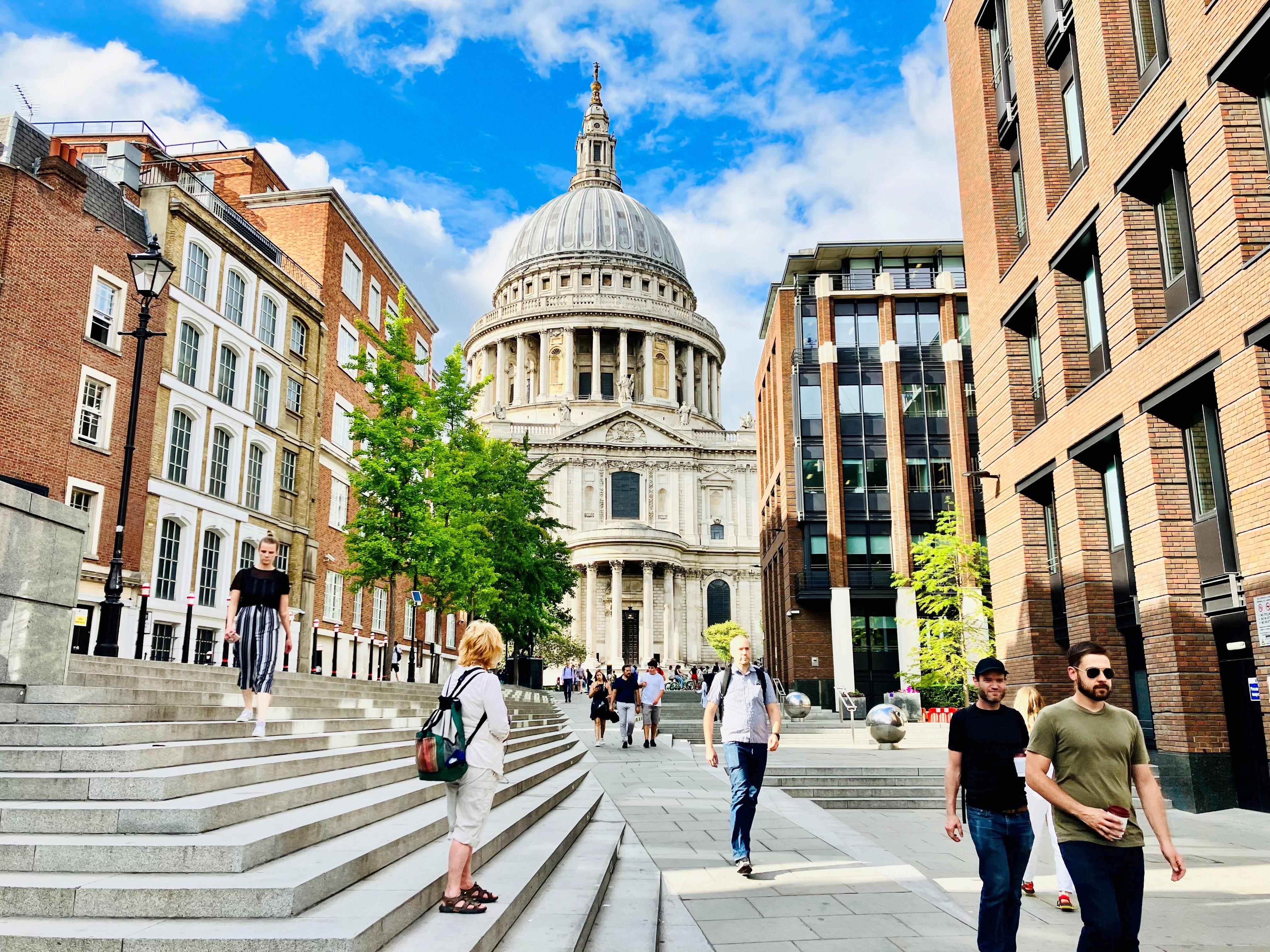
SarahCrossland
Christopher Wren was born on 20 October 1632 in East Knoyle, Wiltshire.
His father was rector at the 13th century St Mary’s church and would have known the battlemented tower which dates from about 1450.
Wren's interest in architecture developed from his study of physics and engineering. In 1665 he visited Paris, where he loved the baroque styles. That year he also designed his first church, a new chapel for Pembroke College.
In 1666, the Great Fire of London destroyed much of the medieval city, including its churches. Wren produced ambitious plans for rebuilding the whole area but they were rejected. So, he turned his talent to rebuilding the city churches.
Wren rebuilt 52 churches in the City of London, including what is regarded as his masterpiece, St Paul’s Cathedral.
He died on 25 February 1723. His gravestone in St Paul's features a Latin inscription which translates as: 'If you seek his memorial, look about you.'
Below are just a few of Wren’s churches.
A walk around the city isn’t complete without a visit to a Wren church.
Bill Bryson and Joanna Lumley, supporters of the National Churches Trust, have also chosen their favourite Wren churches.
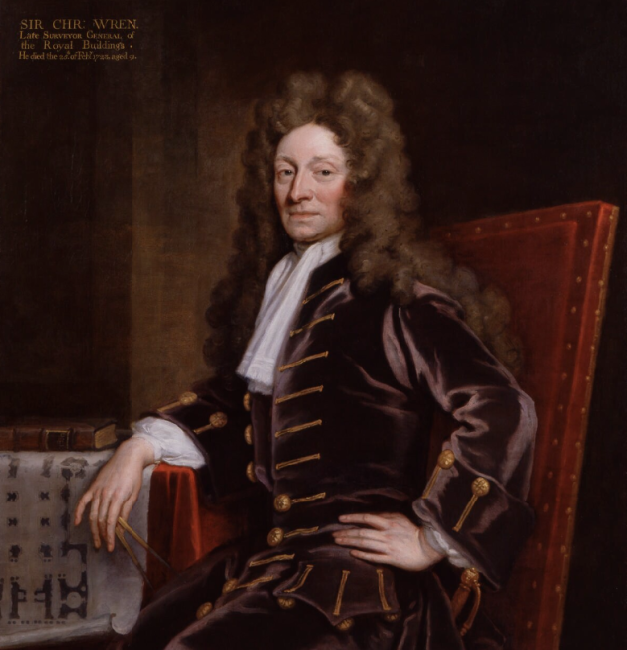
1669 to 1672
St Michael Cornhill, City of London
One of Bill Bryson's favourite churches. He said ‘In 2003, my daughter got married in London but couldn’t use her local church, so we found this one in the City, and what a jewel it is. Built by Christopher Wren after the Great Fire, it is easily overlooked from without, but bright and sumptuous within. I think the vicar was grateful for the business, and the choir sang like angels. It was a fabulous day’.
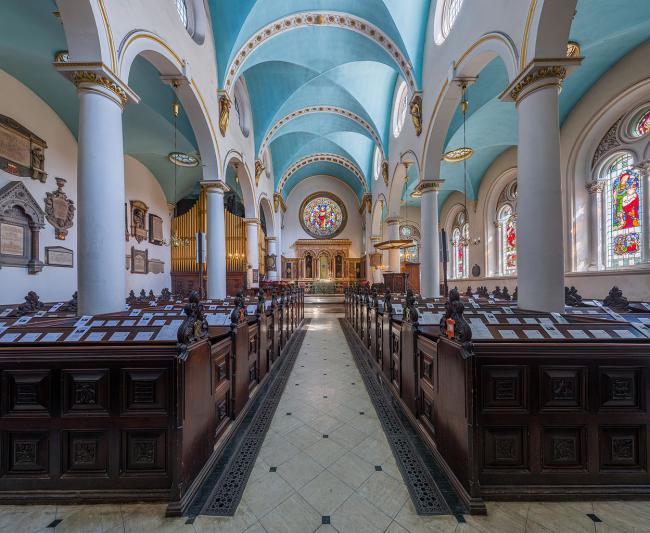
1670 to 1684
Joanna Lumley’s favourite church. She said ‘The tiny graceful spire, like a precious sea-shell, rises among the clustering modern and Victorian buildings like a dream vision. This spire was the inspiration (exactly the right word) for tiered wedding cakes the world over. It is the church of Fleet Street, the newspaper world of London. I love it’. St Bride's is inextricably woven into the history of the City of London. By the time the Great Fire of 1666 left the church in ruins a succession of churches had existed on the site for about a millennium.
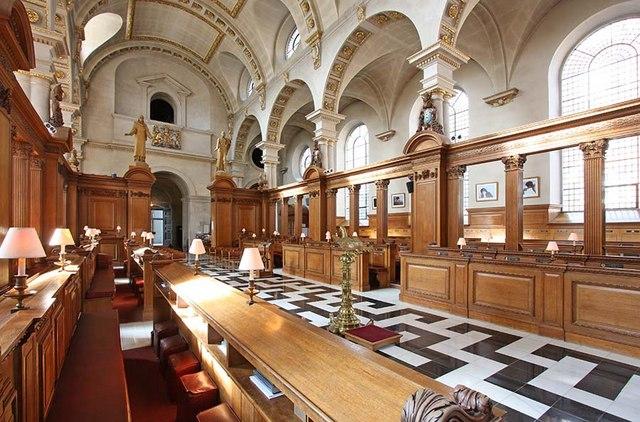
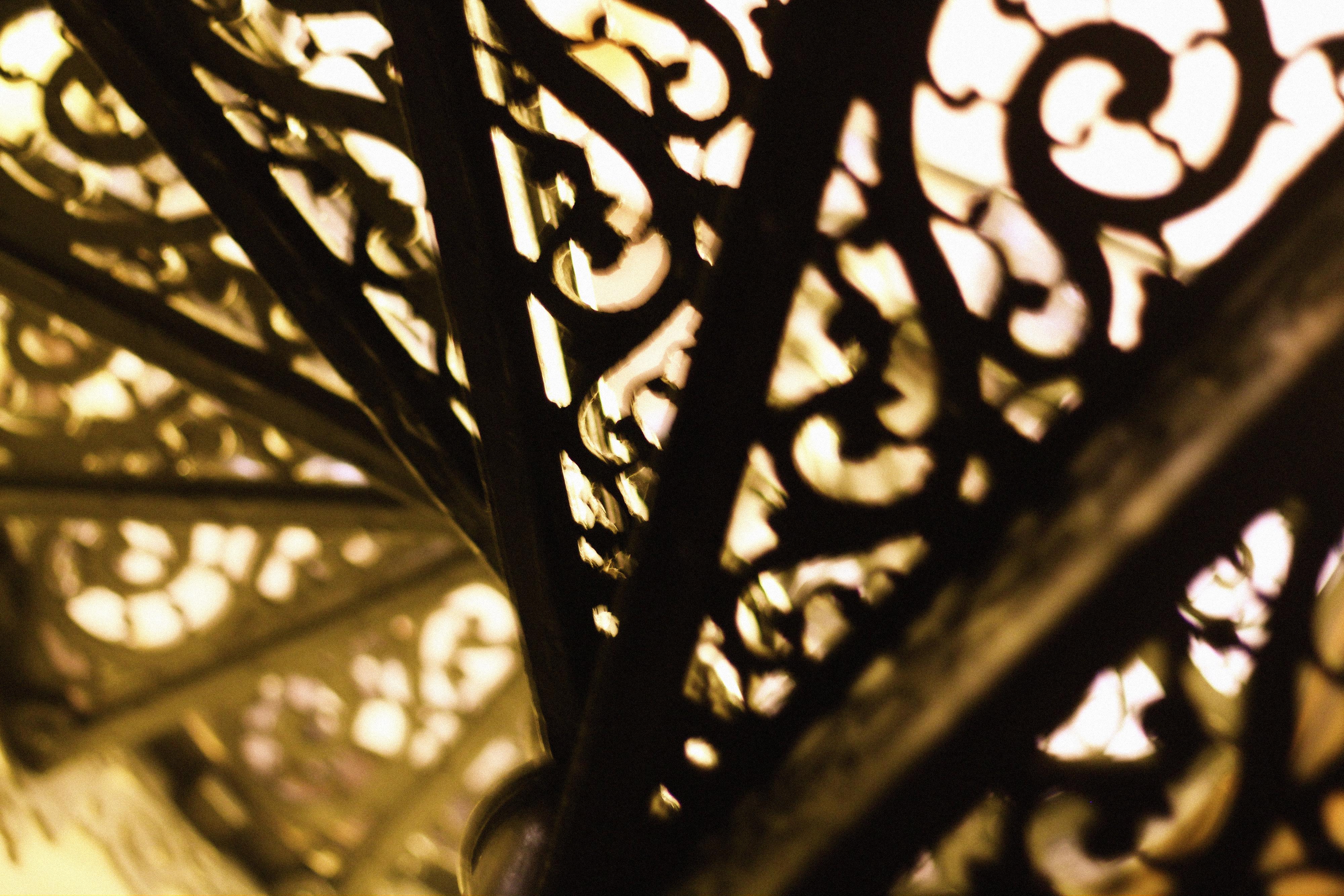
GreshamCollege
1670 to 1683
St Mary le Bow, City of London
One of the first churches to be rebuilt by Wren and almost completely destroyed during World War II then subsequently rebuilt again! The Norman church was known as St Marie de Arcubus, or le Bow, because of the bow arches of stone in its crypt. Wren continued the arch theme in his new design. St Mary’s is one of the best known City churches because of its bells; a true Cockney is said to be born within sound of them and they are immortalised in the nursery rhyme Oranges and Lemons.
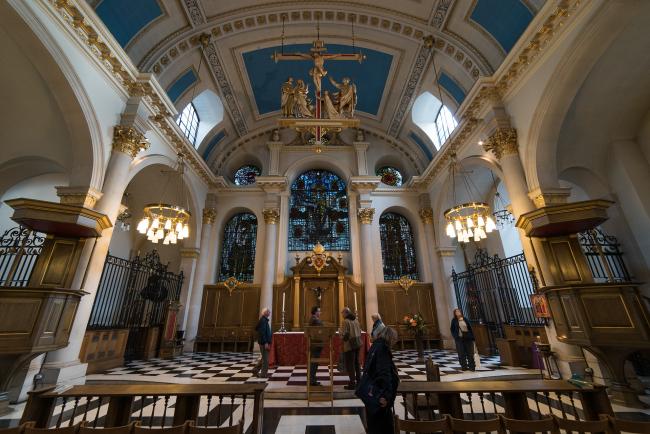
neither need we fear to diminish a miracle by explaining it
: Christopher Wren
1672 to 1679
St Stephen Walbrook, City of London
Wren lived at number 15 Walbrook and took special care in rebuilding this, his parish church. Nothing prepares you, as you climb the 13 steps up to St Stephen's, for the majestic space within. Inside, the dome is Wren's finest, based on his original design for St Paul's. Unlike St Paul's the dome rests on elaborate carpentry frames so requires much smaller supports, giving an unparalleled feeling of lightness and brightness, uninterrupted by galleries. The spiritual effect depends not on decorative richness but on pure geometry and soaring space.
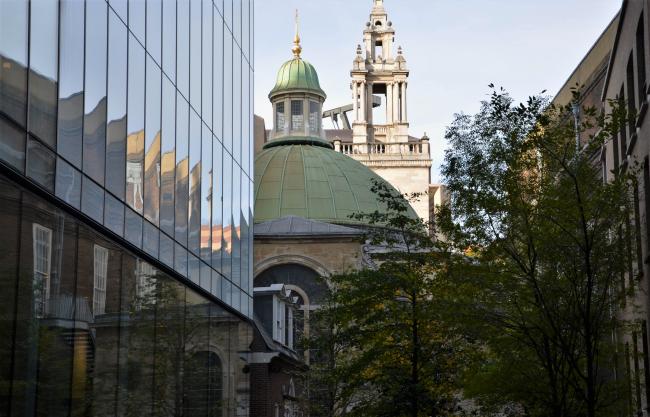
1675 to 1711
St Pauls Cathedral, City of London
Wren’s masterpiece is one of the most famous and most recognisable sights of London. Its dome, framed by the spires of Wren's city churches, has dominated the skyline for over 300 years. In the Great Fire of London of 1666, Old St Paul's was gutted, and the task of designing the replacement was assigned to Sir Christopher Wren on 30 July 1669. The design process took several years, but a design was finally settled and attached to a royal warrant.
The result was the present St Paul's Cathedral, still the second largest church in Britain, with a dome proclaimed as the finest in the world.
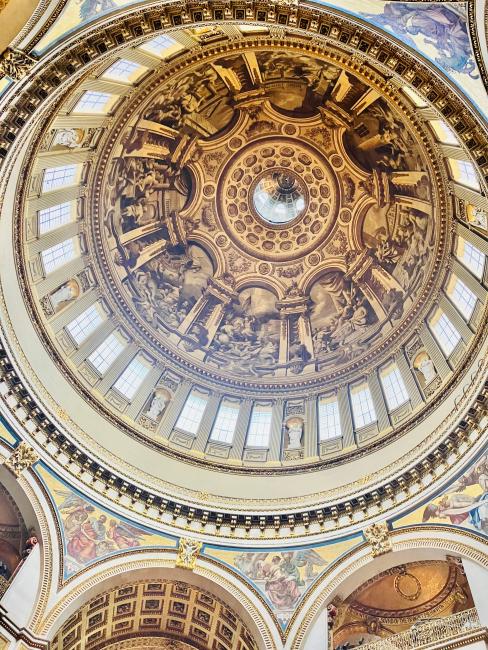
1676 to 1683
St James Garlickhythe, City of London
One of least damaged during the Second World War. The exterior of the church is deceptively simple, however the steeple is one of the city’s most beautiful and ornate. Apart from St Paul's, the ceiling is the highest in the city and Wren was so successful at introducing natural light into the church that it became known as ‘Wren's Lantern’.
The original woodwork includes the altar table carved with doves, the font cover and the churchwardens pews. The font is of marble with carved cherubs' heads. The original ironwork includes the mayoral swordrest with lion and unicorn supporters on the south side.
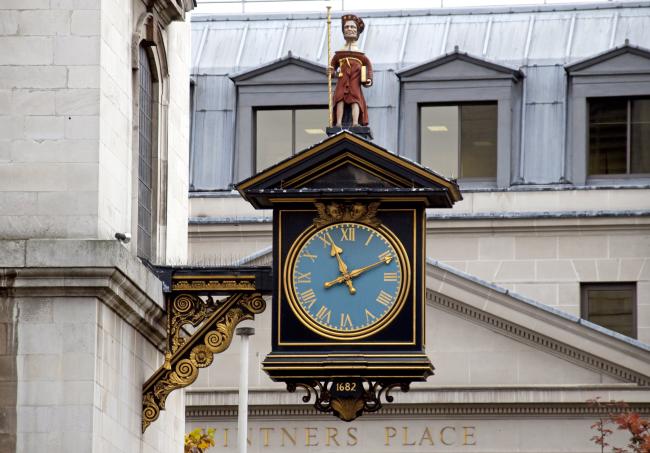
variety of uniformities makes complete beauty
: Christopher Wren
1676 to 1684
Just a short stroll from the chaos of Piccadilly Circus is an oft overlooked church built by Christopher Wren as well as a vibrant daily outdoor market. It is unique as Wren only built a few new churches and it is one of only three he built outside the City of London. William Blake, poet and artist, was baptised here in 1757. The church was damaged in WW II but has been sympathetically restored.
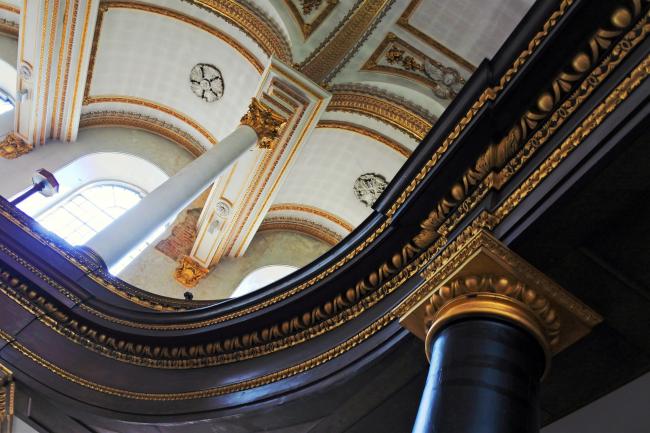
1677 to 1683
St Benet Pauls Wharf, City of London
This is the only Wren church left unaltered, all but four were damaged in the Second World War and the other three either suffered the effects of an IRA bomb or have been restored. Since 1555, St Benet has been the church of the College of Arms, it is the burial place of architect Inigo Jones and even appears in Shakespeare’s Twelfth Night. In the 1870s eminent Welsh Anglicans petitioned Queen Victoria to be allowed to use the building for services in Welsh and it is now one of the City Guild churches as well as the Metropolitan Welsh Church.
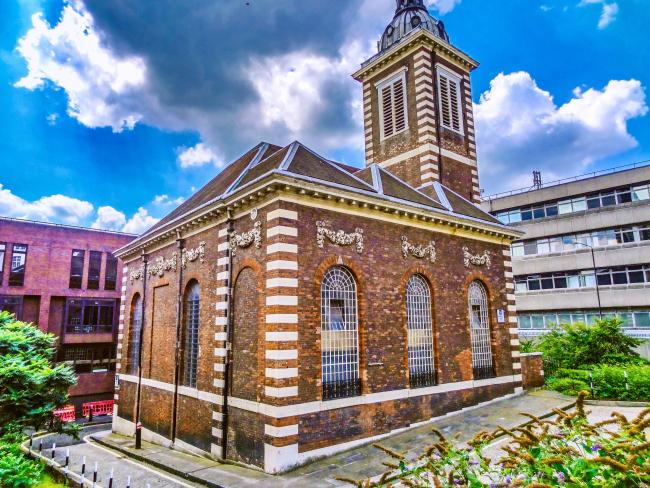
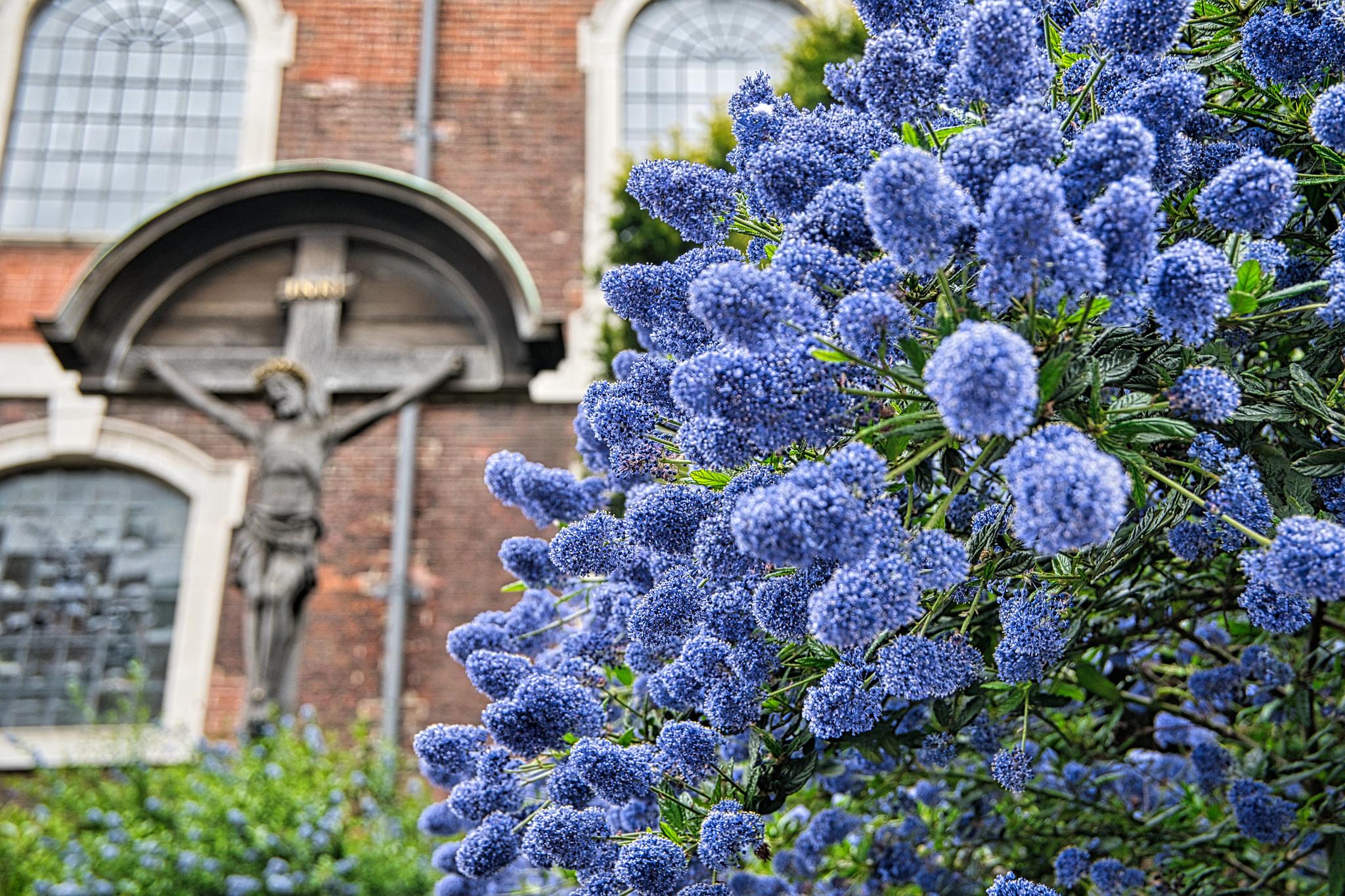
GeoffHenson
1677 to 1684
St Martin within Ludgate, City of London
St Martin’s was one of Wren’s later rebuilding and its slender lead spire was most carefully considered in relation to the dome of St Paul’s Cathedral. The view eastward from Ludgate Circus towards St Paul’s is one of the most memorable in London. In 1941 an incendiary bomb damaged the roof, but St Martin’s received the least damage of all the city churches in the war. In 1962 it become the Chapel of the Honourable Society of the Knights of the Round Table whose history is ancient, although evidence is only patent from 1720.
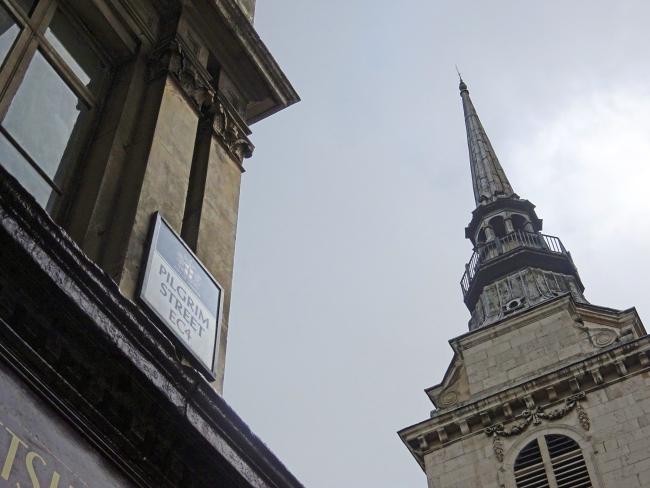
1682 to 1687
Chapel of the Royal Hospital, Chelsea
Built between 1681 and 1687 the chapel is a rare example of Wren's pure ecclesiastical work, being carried out without site constraints. It was designed to accommodate about 500 people, all the staff and pensioners, and rises 42 feet high. The chapel was consecrated in August 1691 and one of the original service books has been preserved. The stunning painting of the Resurrection in the half dome of the apse is by Sebastiano Ricci and was probably paid for by Queen Anne.
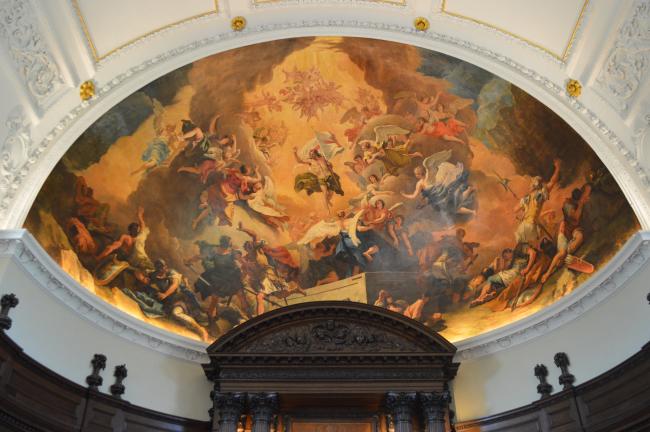
1686 to 1690
St Margaret Lothbury, City of London
Among the wealth of fine Wren-era woodwork made for St Margaret's are the high altar reredos, the pulpit and the baptismal font. Pieces were brought here in the 19th century from other Wren churches being demolished, including the magnificent choir screen from All Hallows the Great, the finely carved font and the reredos in the south chapel, both thought to be by Grinling Gibbons, from St Olave Jewry, and colourful paintings of Moses and Aaron on either side of the high altar from St Christopher le Stocks.
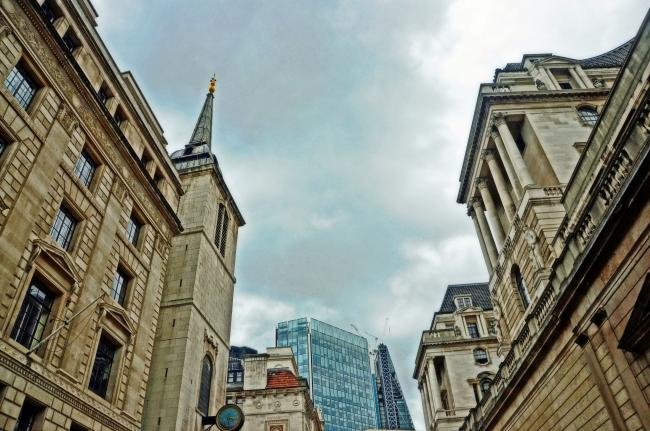
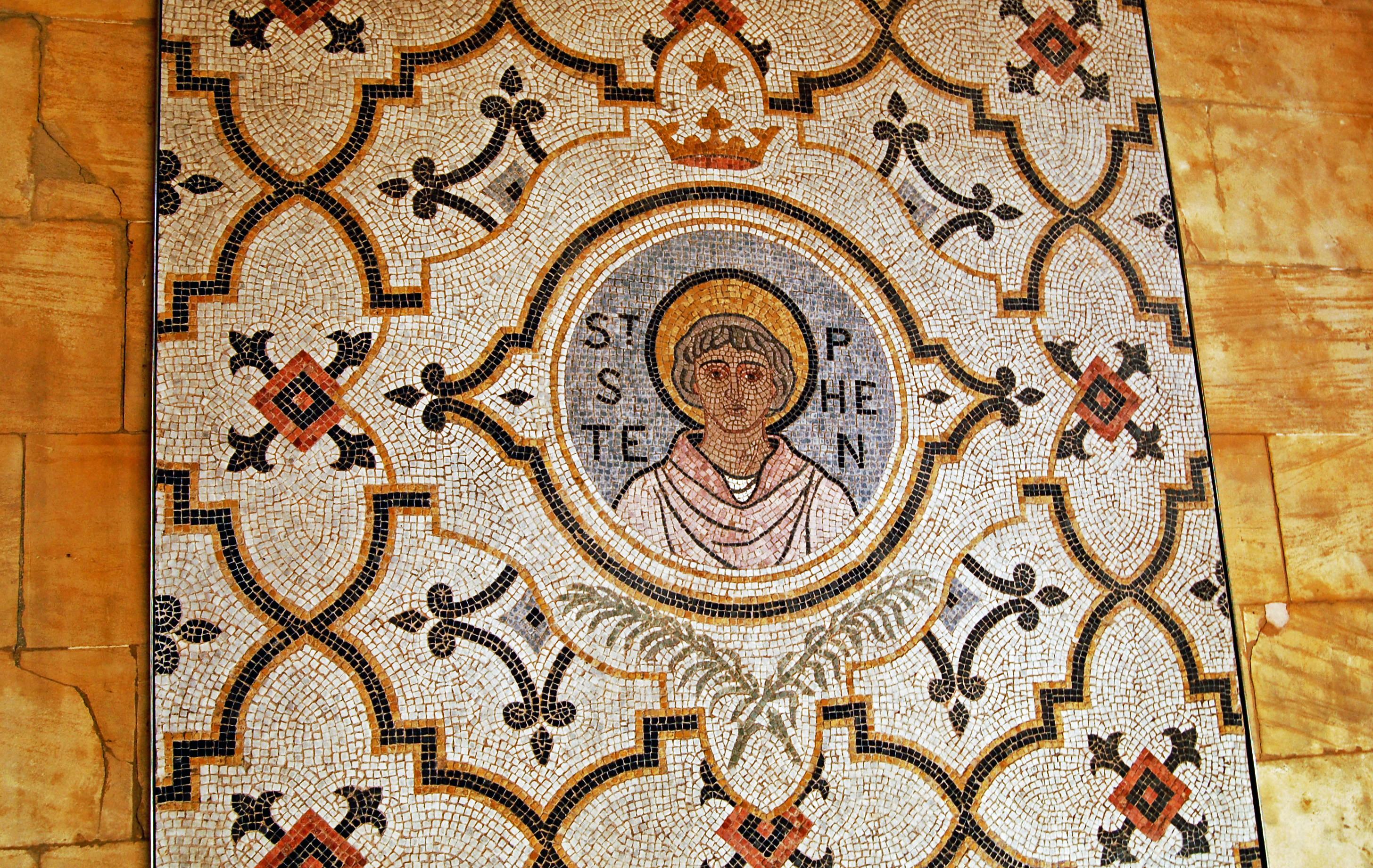
ItsNoGame
